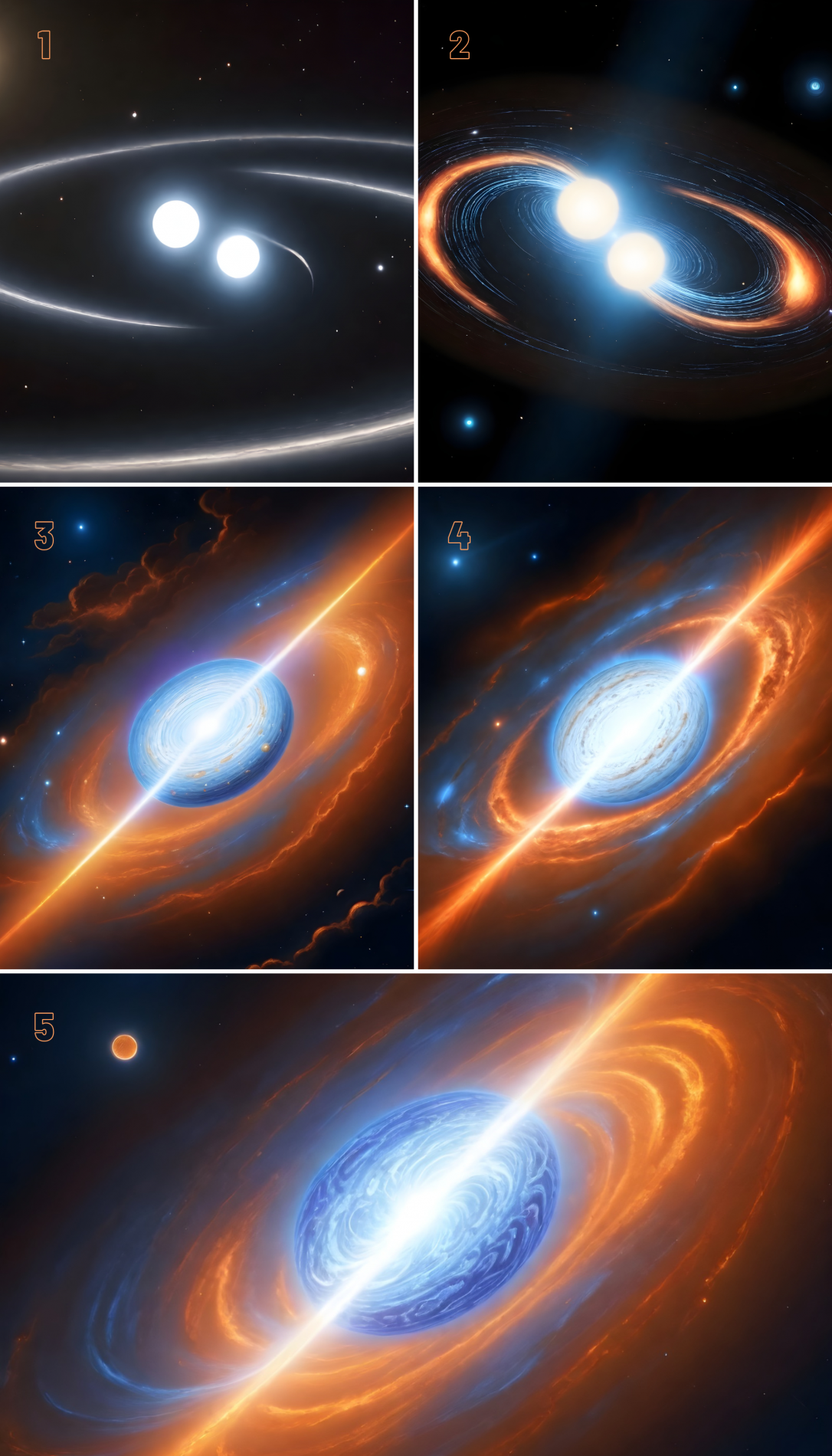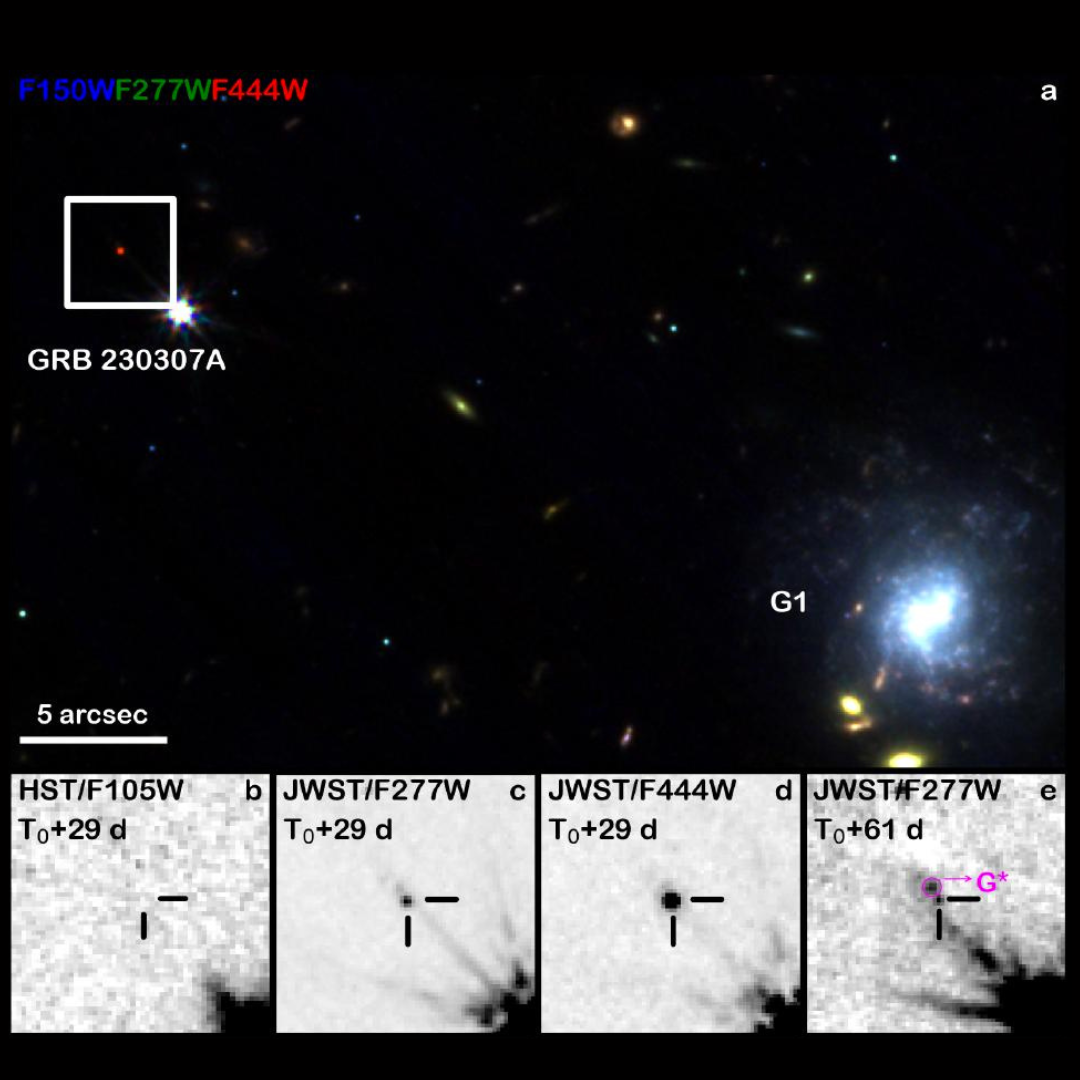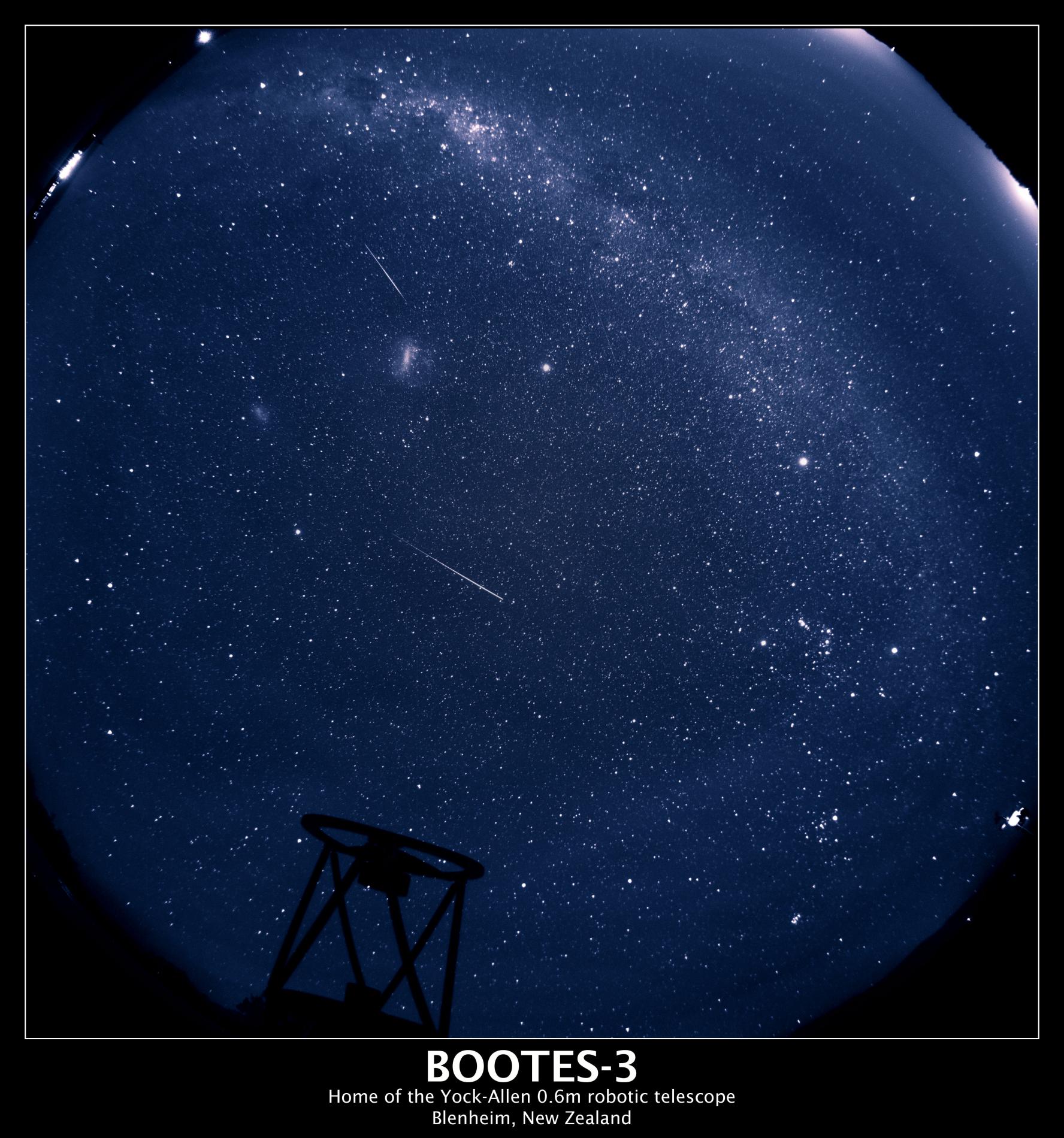First observation of the formation of 'rare earths' following the merger of two neutron stars
A study involving the Instituto de Astrofísica de Andalucía (IAA-CSIC) shows a kilonova as a source of heavy elements, including the precious 'rare earths'.
The work, published in Nature, highlights this type of explosive and extremely energetic phenomena as the ideal environment for the formation of metals heavier than iron and silver.
Kilonovae are extraordinarily energetic and explosive astronomical events that result from the merger of two neutron stars, or of a neutron star with either a black hole or a white dwarf star (the corpse of a Sun-like star). These rare phenomena are characterised by the emission of a short, intense gamma-ray burst (GRB), usually lasting less than two seconds. A study recently published in the journal Nature, in collaboration with the Instituto de Astrofísica de Andalucía (IAA-CSIC), has confirmed the fundamental role of kilonovae in the production of heavy elements in the Universe, especially those known as 'rare earths' (lanthanides).
It is known that stars act as factories of chemical elements from hydrogen and helium. However, stellar nucleosynthesis can only explain the formation of elements of the periodic table heavier than iron. It is in explosive and extremely energetic phenomena, such as supernovae or kilonovae, that the conditions necessary for the creation of many of the heavier elements of the periodic table are generated.
Yuhan Yang, a postdoctoral researcher in the Department of Physics at the University of Rome Tor Vergata, and Eleonora Troja, an associate professor at the university, lead this new study that analyses the time evolution of kilonovae and their involvement in the production of heavy elements.
"In the first few days, the evolution of a kilonova is essentially characterised by the radioactive decay of elements heavier than iron, which were synthesised during the fusion of the two compact objects that gave rise to the phenomenon" explains Yuhan Yang, first author of the paper. "During the weeks and months that follow, the behaviour of the kilonova is expected to differ according to the composition of both the material released and the remnant left over after the explosion" he adds.
However, with some exceptions, it is unusual to be able to observe the evolution of a kilonova for more than a few days. "It takes weeks and months to reveal which metals are forged in the explosion, and so far we have never had the opportunity to observe a kilonova for such a long time" says Professor Eleonora Troja, second author of the paper.

Artist's conception of the fusion process of compact objects (neutron stars) that results in a kilonova associated with a gamma-ray burst. Credit: Clara & Sofía López Martín (Freepik's IAA Image Generator) and Alberto J. Castro-Tirado (IAA-CSIC/UMA)
A 'RARE EARTH' RICH KILONOVA
The kilonova under study is related to a gamma-ray burst observed on 7 March 2023 (GRB 230307A), probably caused by the collapse of two neutron stars located in a distant galaxy about 950 million light-years away from Earth.
Thanks to several highly sensitive observatories and telescopes, such as the Hubble Space Telescope and the James Webb Space Telescope, among others, the authors have been able to follow the event extensively at different wavelengths. This has allowed them to characterise the evolution of the kilonova even up to two months after the explosion. "This is the first time we have been able to see that metals heavier than iron and silver were freshly made in front of us" says Troja.

Combined image of the environment of the kilonova associated with the GRB 230307A burst (the red dot in the inset in the top left corner), obtained by the Webb Space Telescope (JWST, infrared) and the Hubble Space Telescope (HST, optical). The galaxy G1 (in the lower right corner of the image), 950 million light-years away, is probably its host galaxy. In that case, the distance to its galaxy (projected on the plane of the sky) would be about 130 000 light-years (considerable, but possible). Credit: NASA/ESA/CSA/Brendan O'Connor (CMU)/Yuhan Yang & Eleonora Troja (Tor Vergata)
Detailed analysis of these observations points to the production of heavy elements in the material ejected after fusion. Of particular note is the presence of lanthanides, better known as 'rare earths', chemical elements that are fundamental to much of our current technology. "The observed mid-infrared emission from GRB 230307A confirms the formation of elements heavier than iron by a fast neutron capture process, the so-called r-process" explains Alberto J. Castro-Tirado, researcher at the IAA-CSIC and head of the Associated Unit at the University of Málaga, also co-author of the article, together with researchers Ignacio Pérez-García and Youdong Hu, both from the IAA-CSIC. The team has been co-responsible for the optical data contributed to the study acquired by the SOAR telescope, with a diameter of 4.1 metres located in Chile. "This study confirms beyond doubt the fundamental role played by kilonovae in the creation of heavy elements in the universe" concludes Castro-Tirado.

Image of the sky by the all-sky camera at the BOOTES-3 station in New Zealand. It shows the Large Magellanic Cloud, at 8 degrees from which the gamma-ray burst was detected on 7 March 2023.
- “A lanthanide-rich kilonova in the aftermath of a long gamma-ray burst”
- Nature, Issue: 22 February 2024
- DOI: 10.1038/s41586-023-06979-5
- URL: https://www.nature.com/articles/s41586-023-06979-5
- Alberto J Castro-Tirado
- Instituto de Astrofísica de Andalucía (IAA-CSIC) / Unidad Asociada en la Universidad de Málaga
-
Email:
 ajct@iaa.es
ajct@iaa.es
- Instituto de Astrofísica de Andalucía (IAA-CSIC)
- Unidad de Divulgación y Comunicación
- Emilio García - garcia@iaa.es - 649407445
- https://www.iaa.csic.es
- https://divulgacion.iaa.csic.es

